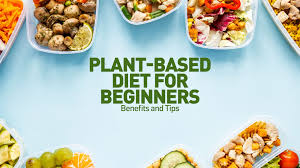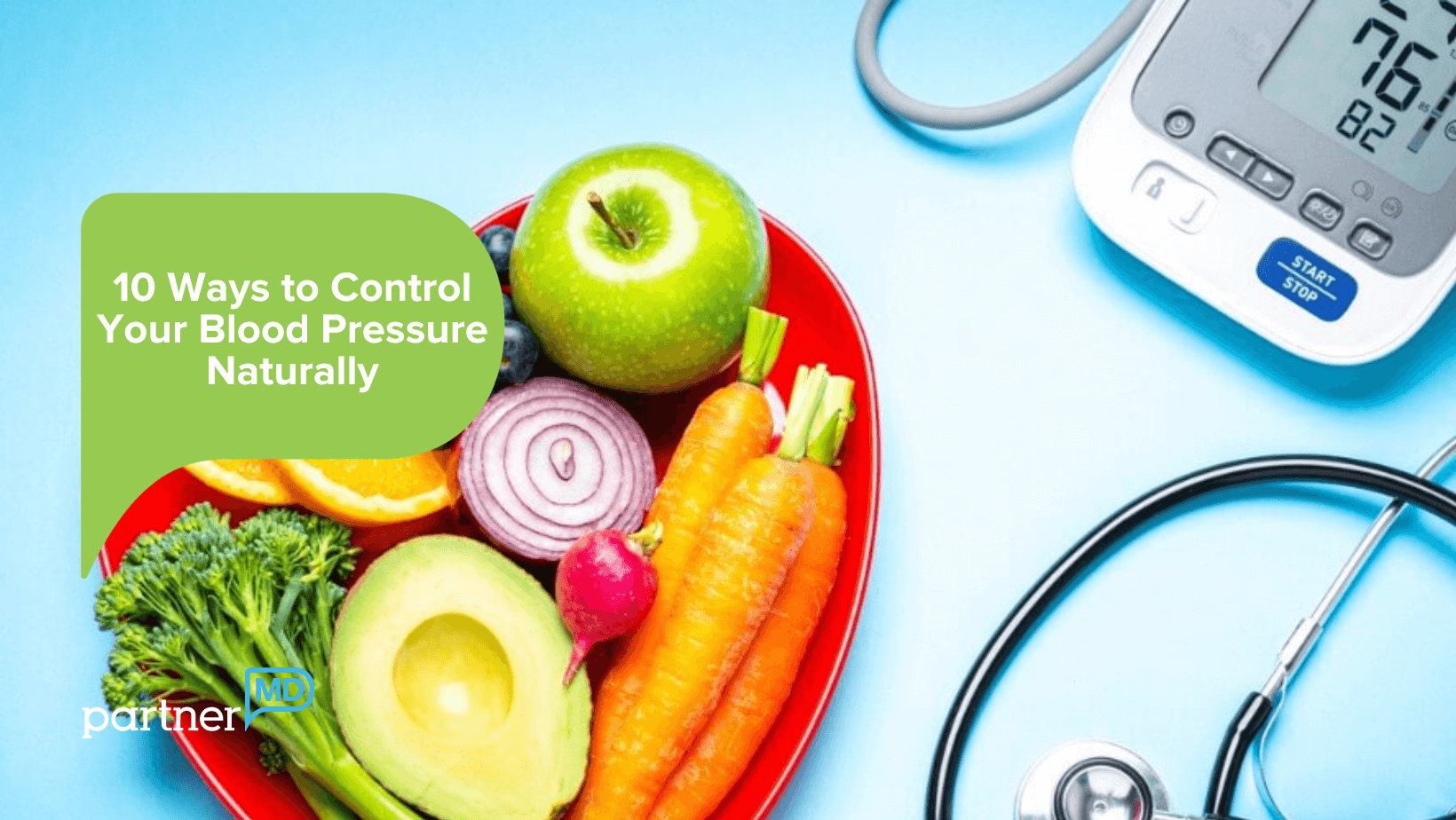
Here’s an ultimate guide to plant-based eating, covering everything you need to know to get started, stay nourished, and enjoy a variety of delicious plant-based meals.
1. What is Plant-Based Eating?
Plant-based eating is a diet focused primarily on whole, unprocessed plant foods like fruits, vegetables, legumes, nuts, seeds, and whole grains. It excludes or minimizes animal products (meat, dairy, eggs) but can vary in degree depending on individual choices.
- Vegan vs. Plant-Based: Veganism excludes all animal products for ethical reasons, while a plant-based diet focuses on health but may include some animal products occasionally (like honey or minimal dairy).
2. Health Benefits of a Plant-Based Diet
A well-balanced plant-based diet offers numerous health benefits, such as:
- Heart health: Reduces the risk of heart disease by lowering cholesterol, blood pressure, and inflammation.
- Weight management: Promotes a healthy weight due to lower calorie density and higher fiber content.
- Digestive health: High fiber intake helps with digestion and prevents constipation.
- Disease prevention: Reduces the risk of chronic diseases like type 2 diabetes, certain cancers, and strokes.
3. Nutrient Considerations
When transitioning to a plant-based diet, it’s essential to ensure you’re getting all the necessary nutrients:
- Protein: Lentils, beans, tofu, tempeh, chickpeas, quinoa, edamame, and seitan are great sources.
- Iron: Spinach, lentils, chickpeas, quinoa, fortified cereals, and pumpkin seeds.
- Calcium: Fortified plant milks, leafy greens (like kale and bok choy), tofu, almonds, and sesame seeds.
- Vitamin B12: Since B12 is mainly found in animal products, consider B12-fortified foods or a supplement.
- Omega-3s: Flaxseeds, chia seeds, walnuts, and algae-based supplements.
- Vitamin D: Sun exposure or fortified foods.
4. Key Foods in a Plant-Based Diet
- Fruits and Vegetables: Aim to eat a variety of colors to get a broad spectrum of vitamins and minerals.
- Whole Grains: Brown rice, quinoa, barley, oats, and whole wheat pasta.
- Legumes: Beans, lentils, chickpeas, peas, and soy products like tofu and tempeh.
- Nuts and Seeds: Almonds, walnuts, chia seeds, hemp seeds, and sunflower seeds.
- Plant-Based Dairy Alternatives: Almond, oat, soy, or coconut milk, and plant-based cheeses.
5. Planning Your Meals
Meal planning is essential for a balanced plant-based diet:
- Breakfast: Smoothie bowls, oatmeal with fruit and nuts, avocado toast, chia pudding.
- Lunch: Buddha bowls with greens, grains, and legumes; lentil soup; vegetable stir-fry.
- Dinner: Vegan chili, plant-based pasta with marinara, vegan burgers, roasted veggies with quinoa.
- Snacks: Hummus with veggies, fruit, trail mix, roasted chickpeas, or rice cakes with almond butter.
6. Cooking Tips
- Batch Cooking: Prepare large portions of grains, legumes, and roasted vegetables to have meals ready for the week.
- Flavor Enhancers: Use fresh herbs, spices (like turmeric, cumin, and garlic), nutritional yeast (for a cheesy flavor), and tahini for added taste.
- Substitute Wisely: Try plant-based alternatives like almond or coconut yogurt, flax eggs, and dairy-free cheeses.
7. Eating Out on a Plant-Based Diet
Many restaurants now offer plant-based options:
- Look for vegan or vegetarian-friendly menus.
- You can often customize dishes (e.g., swapping out cheese or adding extra veggies).
- Many cuisines like Indian, Mediterranean, and Ethiopian have plant-based staples.
8. Sustainability of a Plant-Based Diet
Plant-based eating is not just beneficial for health but is also more sustainable:
- Reduces carbon footprint and water usage associated with animal farming.
- Helps protect biodiversity by reducing the demand for livestock farming.
9. Common Myths about Plant-Based Eating
- You won’t get enough protein: It’s easy to meet protein needs with plant foods, especially if you eat a variety of them.
- It’s expensive: Whole foods like beans, lentils, rice, and veggies are affordable, especially when bought in bulk.
- Plant-based foods are bland: A plant-based diet can be incredibly flavorful, with lots of spices, herbs, and creative dishes.
10. Resources for Support
- Cookbooks: “The Oh She Glows Cookbook,” “Thug Kitchen,” “Minimalist Baker.”
- YouTube Channels: Plant-Based on a Budget, Sweet Potato Soul, and Pick Up Limes.
- Apps: HappyCow (for finding vegan restaurants), Yummly (recipe inspiration), and Forks Over Knives.
11. Common Challenges and How to Overcome Them
Switching to a plant-based diet can come with some challenges, especially in the beginning. Here’s how to overcome some common hurdles:
- Cravings for Animal Products:
- Solution: Try plant-based alternatives like vegan cheese, tempeh, or seitan to replicate the texture and flavor of meat. Slowly wean off animal products and explore new plant-based flavors.
- Social Situations:
- Solution: Bring your own plant-based meal to gatherings or eat beforehand. If you’re at a restaurant, check the menu in advance or make special requests to customize dishes.
- Meal Variety:
- Solution: Diversify your meals with a wide range of grains, legumes, vegetables, and spices. Try different cuisines like Mediterranean, Mexican, or Asian, which often have plant-based options.
- Eating Enough Calories:
- Solution: Plant-based foods tend to be lower in calories, so make sure to eat enough nutrient-dense, calorie-rich foods like avocados, nuts, seeds, and whole grains.
12. Transitioning to a Plant-Based Diet
Starting with a plant-based diet can be overwhelming if you try to make drastic changes overnight. Here’s a step-by-step guide to easing into the lifestyle:
- Step 1: Start Slow: Begin by eliminating one animal product at a time. Start with red meat or dairy, then move on to other items like eggs and poultry.
- Step 2: Replace Animal Protein with Plant-Based Protein: Introduce plant-based proteins like beans, lentils, tofu, and tempeh in your meals. Gradually reduce meat portions and replace them with plant-based alternatives.
- Step 3: Plan Balanced Meals: Ensure your meals contain a variety of macronutrients (carbs, proteins, fats) and micronutrients (vitamins and minerals). Focus on whole, minimally processed foods.
- Step 4: Experiment with New Recipes: Explore plant-based cookbooks or blogs, try out new recipes, and discover how delicious plant-based meals can be.
- Step 5: Track Your Progress: Keep a journal or use a food tracking app to ensure you’re meeting your nutritional goals, especially when it comes to vitamin B12, iron, and omega-3s.
13. Plant-Based Meal Ideas for Beginners
If you’re new to plant-based eating, here are some simple and beginner-friendly meal ideas:
Breakfast:
- Tofu Scramble: Scramble tofu with vegetables like spinach, mushrooms, onions, and bell peppers. Add turmeric and nutritional yeast for flavor.
- Avocado Toast: Top whole-grain toast with mashed avocado, a sprinkle of chili flakes, and nutritional yeast for a cheesy taste.
- Smoothie: Blend spinach, frozen berries, banana, almond milk, and chia seeds for a nutrient-packed smoothie.
Lunch:
- Chickpea Salad Sandwich: Mash chickpeas with vegan mayo, lemon, celery, and dill, then spread it on whole-grain bread.
- Lentil Soup: A hearty soup made with lentils, carrots, celery, onions, and garlic, served with whole-grain bread.
- Veggie Wrap: Whole-wheat wrap filled with hummus, fresh veggies, avocado, and quinoa or brown rice.
Dinner:
- Vegan Stir-Fry: Sauté tofu with broccoli, peppers, snap peas, and carrots in soy sauce, garlic, and sesame oil, served with brown rice.
- Black Bean Tacos: Warm corn tortillas, filled with black beans, avocado, salsa, and cilantro.
- Vegan Chili: Made with kidney beans, black beans, tomatoes, corn, and spices. Serve over quinoa or with cornbread.
Snacks:
- Roasted Chickpeas: Crunchy and full of protein, roasted chickpeas are a perfect snack.
- Hummus and Veggies: Sliced cucumber, carrots, and bell peppers with hummus for dipping.
- Fruit and Nut Butter: Apple slices with almond butter or banana with peanut butter.
14. How to Read Food Labels
When shopping for plant-based foods, especially packaged items, it’s important to read labels carefully:
- Check for Hidden Animal Products: Look for ingredients like whey, casein, rennet, and gelatin, which are derived from animals.
- Nutritional Value: Ensure that the product provides sufficient protein, fiber, and essential vitamins/minerals. Look for fortified foods to meet your B12 and calcium needs.
- Avoid Processed Junk: While processed vegan foods can be convenient, aim to eat mostly whole, plant-based foods to maximize nutrition.
15. Eating Plant-Based on a Budget
Plant-based eating can be very affordable, especially if you focus on buying whole foods and seasonal produce. Here are some budget-friendly tips:
- Buy in Bulk: Lentils, beans, rice, quinoa, and oats are all inexpensive and can be bought in bulk for a better price.
- Frozen Vegetables: Frozen veggies are often cheaper and last longer than fresh ones. They’re just as nutritious and perfect for soups, stews, and stir-fries.
- Seasonal Produce: Shop for fruits and vegetables that are in season to get the best prices.
- Make Your Own Snacks: Instead of buying pre-packaged snacks, make your own. For example, homemade granola bars, roasted chickpeas, or energy bites are easy and cheap to make.
16. Plant-Based Eating for Athletes
A plant-based diet can support an active lifestyle and is even gaining popularity among athletes. Here’s how to maintain performance on a plant-based diet:
- Prioritize Protein: Include a variety of plant-based proteins to support muscle repair and recovery, such as legumes, tofu, tempeh, quinoa, and edamame.
- Carbohydrates for Energy: Whole grains, sweet potatoes, and fruits provide the necessary fuel for endurance and stamina.
- Healthy Fats: Include omega-3-rich foods like flaxseeds, chia seeds, walnuts, and avocados for joint and heart health.
17. Long-Term Sustainability of Plant-Based Eating
Plant-based eating can be a lifelong commitment. To ensure long-term success:
- Stay informed about nutrition and health.
- Find a supportive community or online groups to share experiences, recipes, and tips.
- Continually explore new plant-based products, recipes, and innovations to keep your meals exciting and varied.



 DailyMediCure
DailyMediCure 










vzcps4